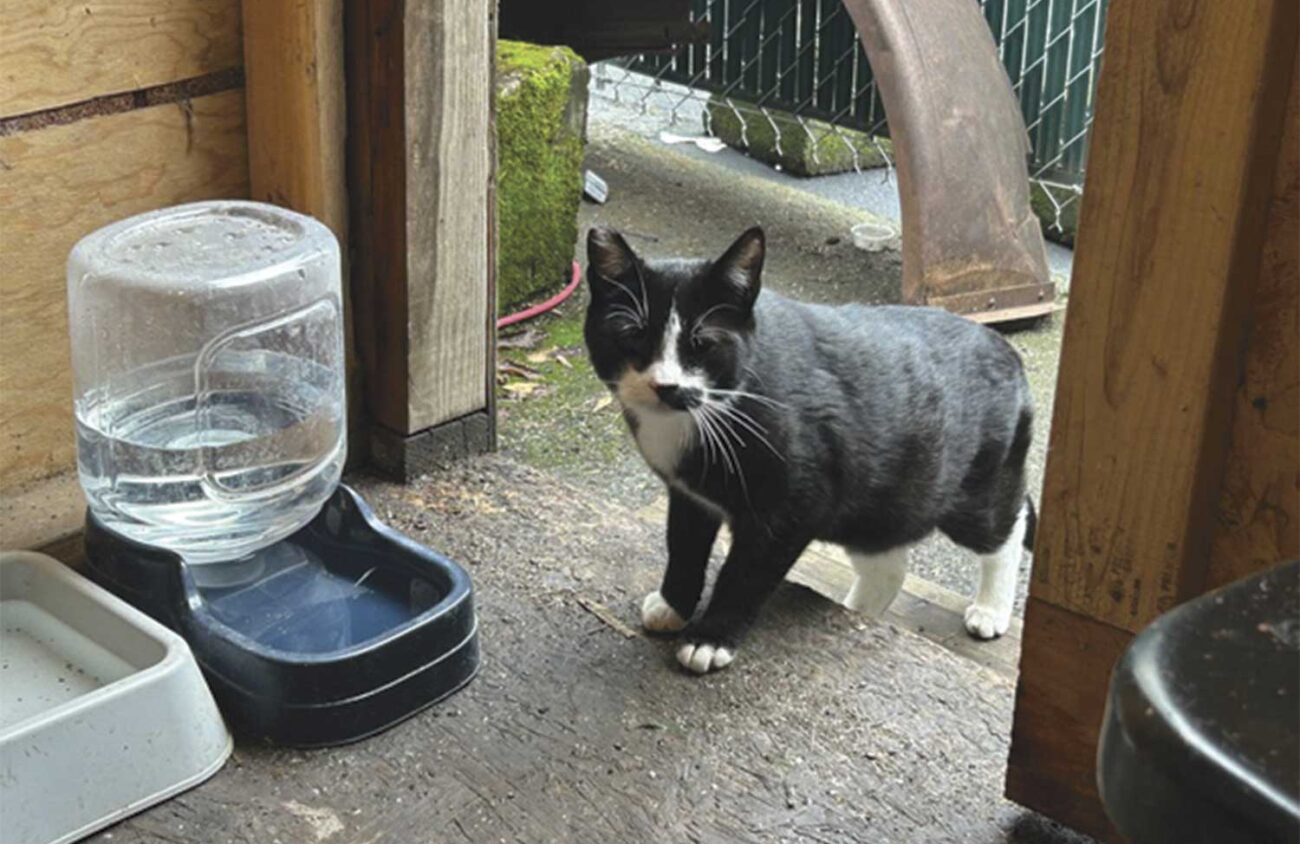When Greenhill Humane Society needed to find homes for a dozen feral cats and kittens that had been removed from a colony at the J.H. Baxter toxic industrial cleanup site in west Eugene last summer, Sasha Elliott knew who to call.
Elliott, Greenhill’s operations director, was contacted in August by the Environmental Protection Agency, which had found 10 or more feral cats at the Baxter site. By early fall, the EPA live trapped a dozen cats — nine adults and three kittens no more than a week old — and turned them over to Greenhill. The very weak kittens didn’t survive, but the adults did.
The feral cats were not, Elliott says, destined to make good pets. “Behavioral assessments confirmed that these cats were not socialized to people and would be better suited for roles as working or barn cats,” she says. “We immediately began searching for appropriate placements in barns, outbuildings, shops or warehouses where the cats could live safely and comfortably without the pressure of human interaction.”
That’s when she thought of Eugene sculptor Jud Turner, a longtime friend and Greenhill supporter.
Turner and his wife, artist Renee Mahni, have a spacious studio complex in an industrial area near the Baxter site — and they share a deep love for animals. In fact, at their studio/gallery they now house two full-sized pigs, six rabbits and a fluid array of local feral cats, who hang out and enjoy food and the warmth of a heated shelter Turner built.
So when Elliott called, Turner was more than happy to oblige. He said they could take two — though by the time he got word, only one cat was still in need of a home. “We have a lifelong love of cats, and a soft spot for animals in need,” the artist says. “If we feel that we can help, we will.”
Turner and Mahni picked up their new cat — then named Sycamore — in September and brought him home. Mahni named the cat Midas after a sci-fi character. “Like Daredevil and the Teenage Mutant Ninja Turtles, the Green Arrow villain Midas got his powers after being doused with toxic waste,” she says. “Midas was originally a scientist who worked with bacteria that could clean up biohazards.”
Midas, a handsome black and white shorthair tuxie cat of indeterminate age, has been pampered since Day One.
“What we hadn’t realized is that a feral cat being relocated is likely to run away and never return unless it has a chance to establish a new home base,” Turner says. “The recommended method for establishing a new home base is to confine the cat to a small indoor area for a period of four to six weeks.”
Midas was placed in a spacious storage shed next to the studio, where he enjoyed a heated cat bed, a nightlight and a radio tuned to KWAX, the University of Oregon’s classical music station. Midas ate very well — but Turner and Mahni rarely saw him during the six or so weeks he was confined.
“He would just hide behind the bins of scrap metal. It was sort of like having a theory of a cat rather than an actual cat. We would just see the evidence of his existence — food eaten, poops in the litter box — but we would never see him.”
Finally one day Turner went to feed Midas and found the cat had pooped in his water bowl. That, he thought, was a statement. Confinement was over.
These days Midas hangs out in and near the shed, whose door remains open so he can come and go as he pleases. He socializes with another feral cat that lives in the neighborhood, and even has allowed Turner to touch him — once, briefly. A visitor to the studio managed a distant glimpse by standing quietly about 20 feet away from the shed after Turner put food out.
“He’s just very cautious so far,” Turner says. “But what has been great to see is that he very quickly made a friend with another of the feral cats that is around. Renee named her Mirabelle. We have seen them eating together and they seem to have bonded. Very heartwarming!”
